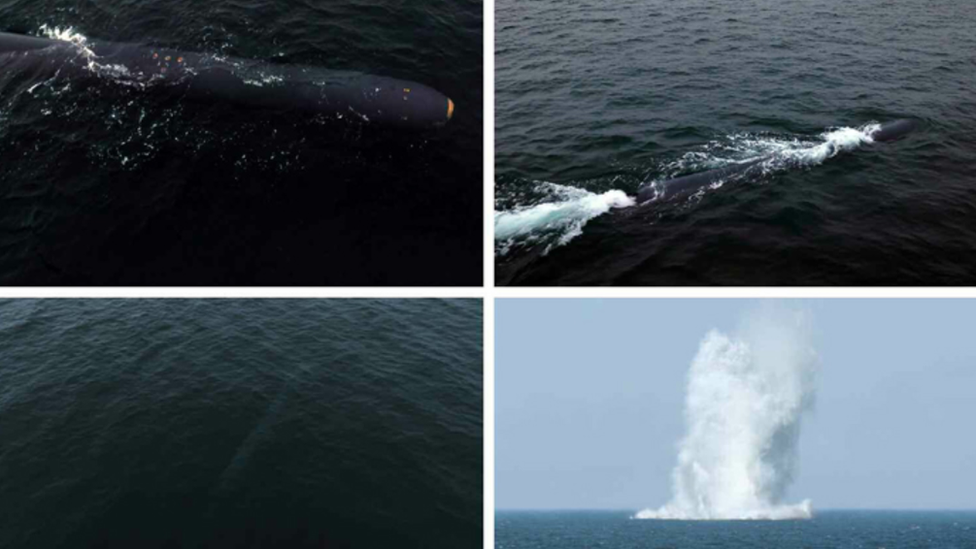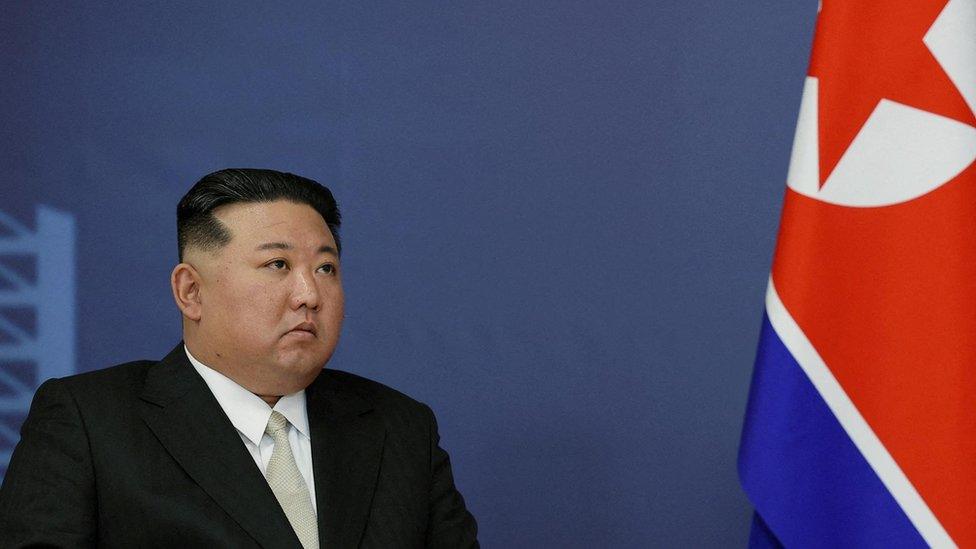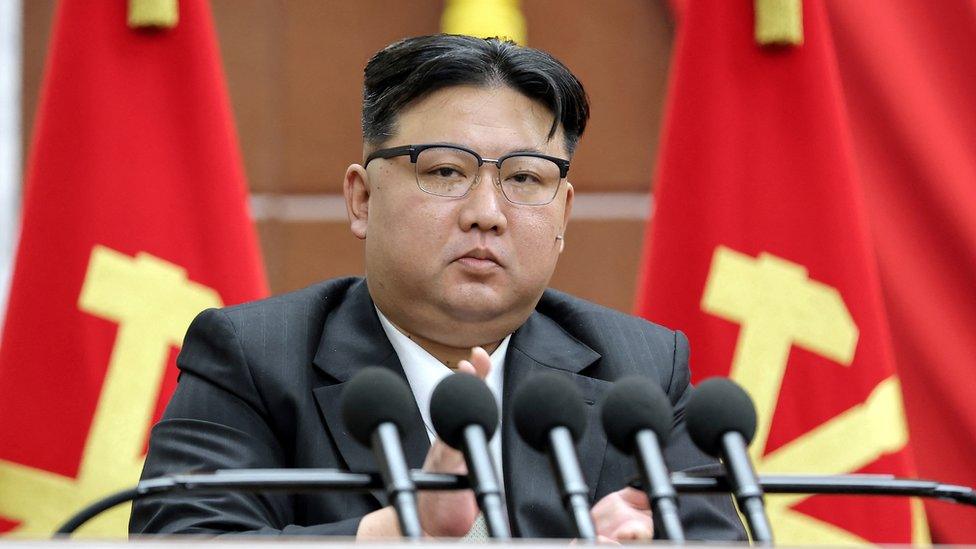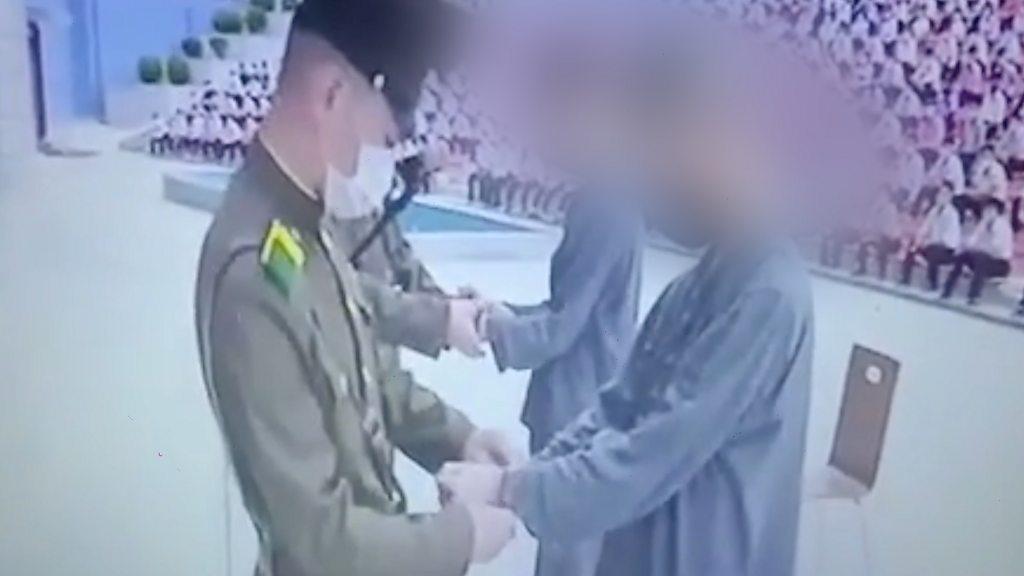N Korea conducts 'underwater nuclear weapons system' test - state media
- Published

North Korean state media published these images of the "underwater nuclear system" when the drones were revealed last April
North Korea says it has carried out a test of its "underwater nuclear weapons system" in response to drills by the US, South Korea and Japan this week.
The underwater drone, which supposedly can carry a nuclear weapon, was tested off the east coast, state media said.
There is no other evidence of the tests being conducted and Seoul had earlier said the North's descriptions of the drones' capability were exaggerated.
South Korea called the reported tests a "provocation".
It "threatens peace on [the] Korean Peninsula and the world," the South Korea's defence ministry said, adding: "If North Korea directly provokes us, we will respond in an overwhelming manner following the principle of immediate, strong, and terminal action."
The North has claimed tests of its "Haeil-5-23" system before, but the latest incident comes as the North has ramped up military action in recent weeks.
On Sunday, it claimed to have deployed a new solid-fuelled intermediate-range ballistic missile.
That followed live-fire drills at the maritime border with South Korea in the first week of January.
Pyongyang leader Kim Jong Un has also been increasingly aggressive in his policy direction and rhetoric - ending several agreements aimed at peace-keeping in recent months.
On Friday, North Korea said it had been provoked by joint drills by Washington, Seoul and Tokyo to carry out a test of its underwater weapons, according to a report by state agency KCNA.
It accused the exercises of "further destabilising the regional situation" and threatening the North's security.
The US, South Korea and Japan say they have conducted more exercises in the past year as a deterrence response to the increasing frequency of North Korea's military actions, which include multiple tests of its nuclear ballistic missiles and launches of new weapons. All such actions are in breach of UN sanctions.
But Mr Kim has repeatedly said his regime is building up its military arsenal in preparation for war that could "break out at any time" on the peninsula.
Over the New Year period, he signalled some fundamental policy shifts in his regime's stance to South Korea.
And earlier this week he declared the former bedrock goal of re-unification with South Korea was over, designating the South as the "principal enemy".
The rhetoric follows several claimed advances in his country's military and nuclear capabilities - including in its underwater operations.
Last September, the North revealed what it claimed was its first submarine capable of launching nuclear weapons.
Since March 2023, it has also claimed tests of its Haeil system - unmanned, underwater nuclear-armed drones. Haeil means "tsunami" in Korean.
Little is known about these weapons or their claimed performance but North Korean media has described them as being able to sneak into enemy waters and cause large underwater explosions.
Analysts have said that if the weapons function as presented by the North, they would be seen as a less significant weapon than the regime's nuclear ballistic missiles.
"Considering North Korea's defence science level and the fact that the weapon is still in a developing stage, it is not yet at a stage to pose a significant threat," Ahn Chan-il, a defector-turned-researcher at the World Institute for North Korea Studies, told news agency AFP.
Late last year Pyongyang also declared it had successfully put a spy satellite in space after earlier failed attempts and has pledged to put three more up this year.
Whether the satellite is actually functioning has yet to be independently verified.
But South Korea said the North had managed to get its satellite up with help from Russia, which in turn reportedly received arms from the North for its war in Ukraine.
Mr Kim had high-profile meetings with Russia's leader Vladimir Putin and defence minister Sergei Shoigu last year. North Korea's foreign minister was also in Moscow this week.

Sign up for our morning newsletter and get BBC News in your inbox.

Related topics
- Published16 January 2024

- Published5 January 2024

- Published31 December 2023

- Published18 January 2024
